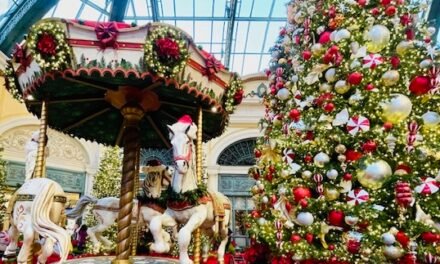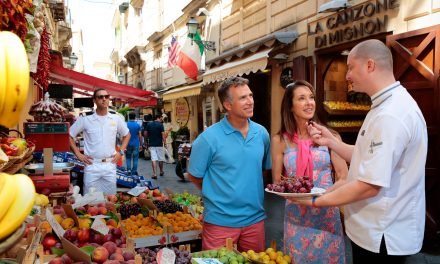
You can never have enough Charleston!
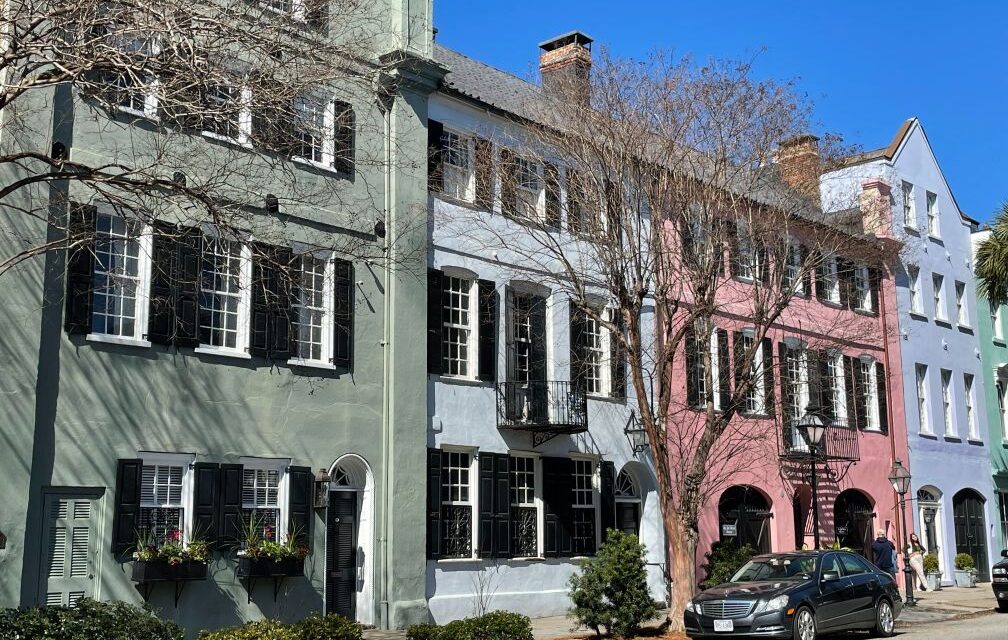
Charleston is an enchantress, who puts her spell on visitors, time and time again. Having been to this southern belle of a city before, I didn’t think it would have the same effect on me as it did previously. I was wrong. In fact, I was smitten anew and my feelings for this town only intensified.
It’s hard not to fall in love with Charleston. She knows how to woo you and keep you coming back for more of her sultry charm. Everything, from her stately homes and colorful history to her fascinating attractions and of course, her food, is catnip for visitors. Combine that with the intoxicating fragrances of the Magnolias, the ocean air and the rustle of Palmetto fronds, and you have a feast for the senses.
One of my favorite things to do in the city is to take a horse-drawn carriage tour with Palmetto Carriage Tour Company. It’s an enjoyable and informative way to take in the sights. We were in capable hands with Martha and Butler, a pair of trusty draft horses, leading the way.
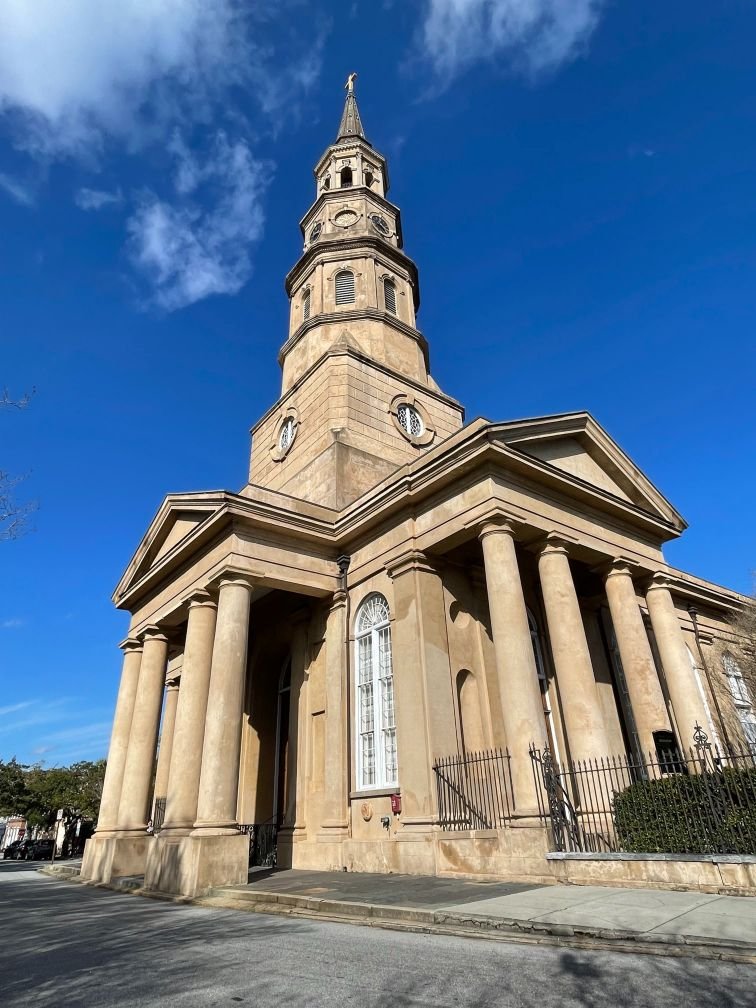
Charleston is called the Holy City

City Market
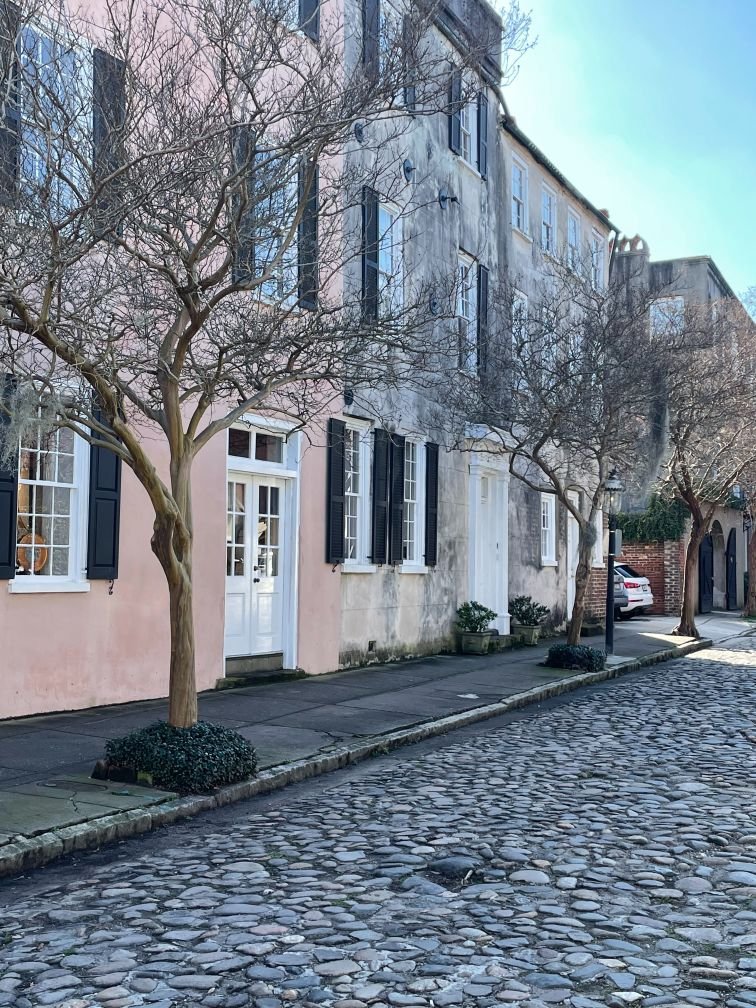
Palmetto is the largest carriage operation in the country, and from what we were told (and saw), the company is known for its extremely humane treatment of their horses. Each animal has an eighteen-week vacation on a thirty-acre farm. They’re also given lengthy breaks between rides, where they rest in the “employee break room,” with cooling fans, water and feed buckets, wipe-downs, and plenty of TLC. The company regards its forty plus horses and mules as family. It’s a semi-retirement gig for these creatures, who have spent the first part of their lives working on Amish farms in the Midwest.
As we clip-clopped down the cobblestone streets, hearing church bells ring, and seeing a skyline of steeples in every direction, our guide explained to us why Charleston has been called the Holy City. As a result of the town’s attitude of religious tolerance, many people from Europe came to the Carolinas to escape persecution. They erected hundreds of churches of varying denominations, some dating back to its founding as the colony of Charles Towne in 1670. Ironically, along with the churches, they built taverns – one for every thirteen people – giving it a reputation as a drinking town with churches!
Charleston has nearly 4,000 pre-Civil War dwellings that are the pride and joy of local residents. You can tour several of the significant ones, such as the stately Edmondston-Alston House, the Heyward-Washington House with its notable formal gardens, and the Nathanial Russell House, which features a free-flying staircase.
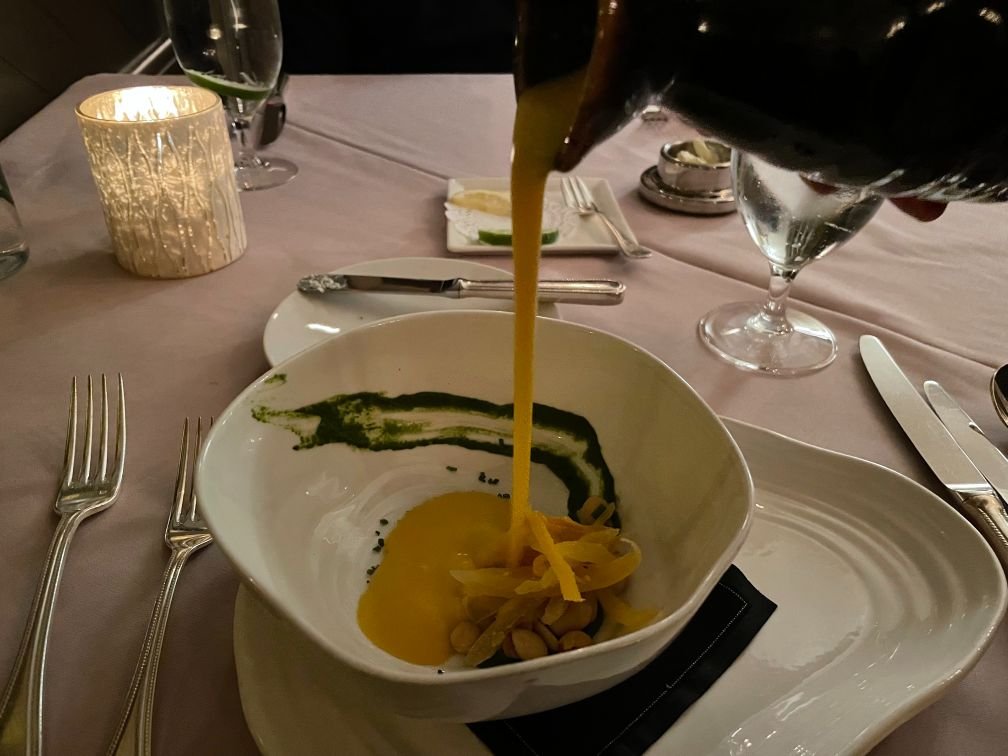
Butternut squash and peanut soup at Circa
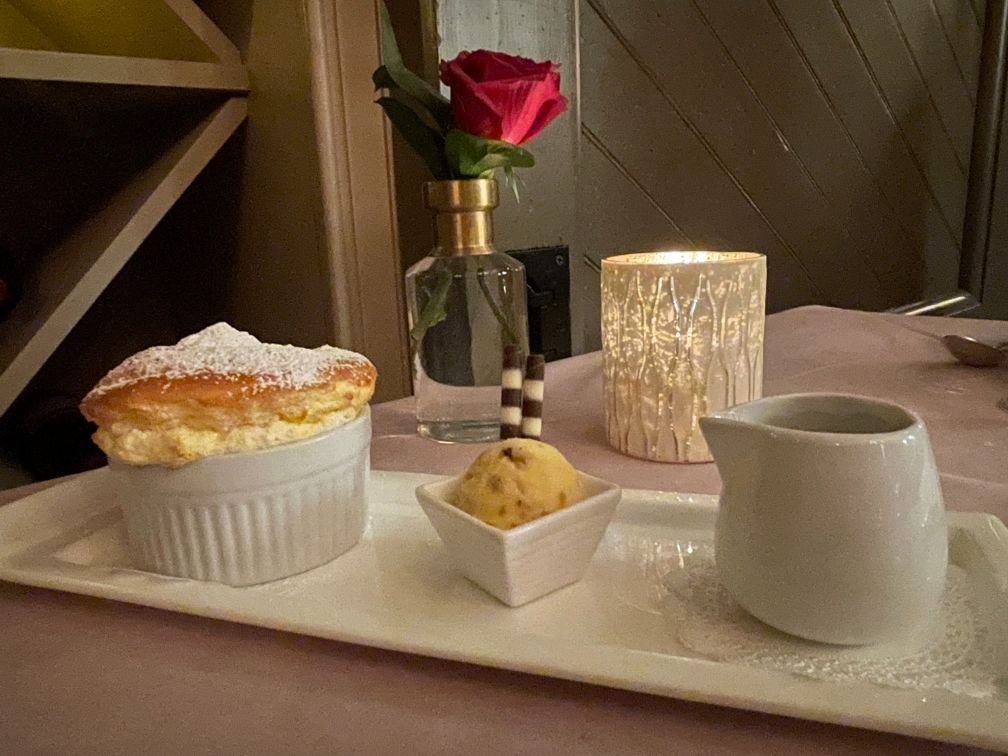
Apple rum soufflé at Circa
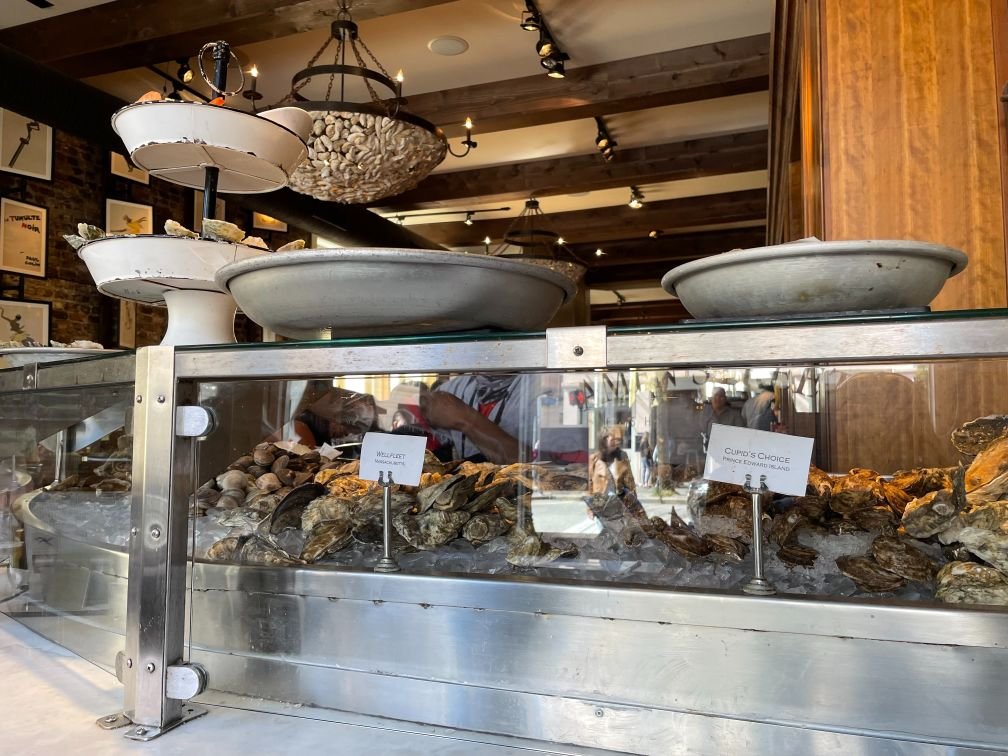
Oysters at Amen Street

Seafood stew
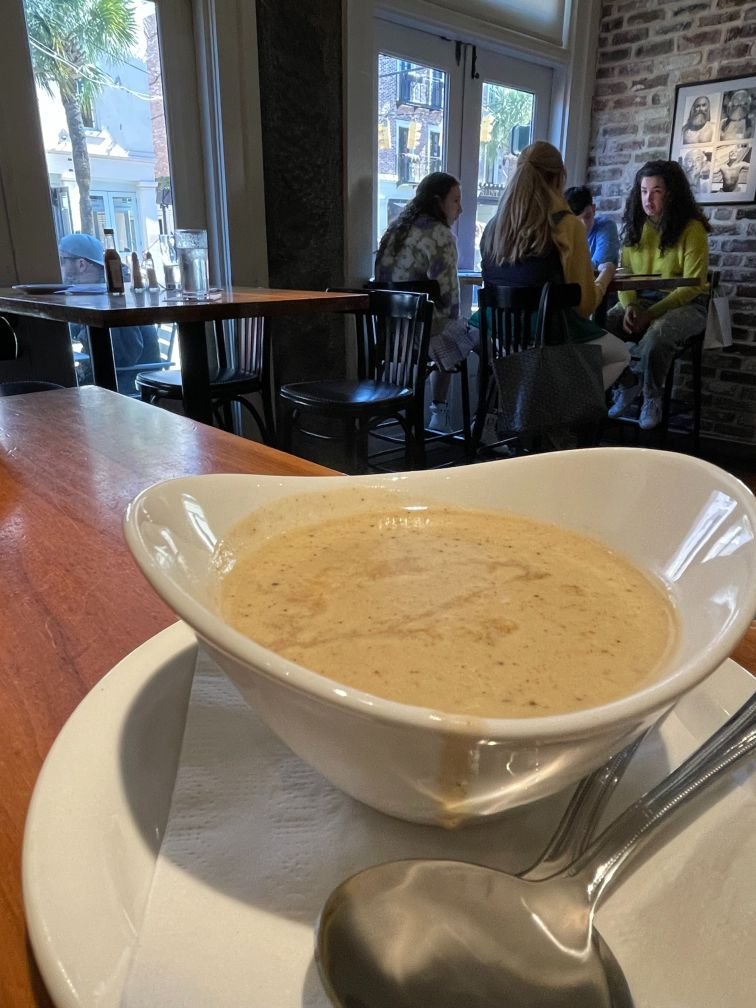
She Crab soup
The Battery, once the first line of the city’s defense and now a popular riverfront park with a lovely promenade, offers great views of Fort Sumter and Sullivan’s Island Lighthouse, as well as some of the most lavish homes in town. These gems sport massive columns and wide verandas and were built as summer retreats for 18th century plantation owners. Look closely and you’ll see that a few have finials on their walls. These are the ends of earthquake bolts that run through the building. They were installed after the 1886 earthquake, which was responsible for destroying half of downtown Charleston. The bolts remain, as preparation for the next seismic eruption.
Other residences are representative of the Charleston Single House style of architecture. You’ll observe that these homes are one-room-wide with the narrow end of the building facing the street. They have two-story verandas along the long side and were constructed as such to provide cross-ventilation in pre-air conditioning times.
You might also take note of the blue-green color of paint on a number of the houses, particularly on the porch ceilings, window trim and doors. It’s called “Haint Blue,” and was originally used to confuse evil spirits or “haints” and keep them away. The blue represented water, which spirits purportedly cannot cross. You can still buy Haint Blue in the paint stores in town with dozens of shades from which to choose.
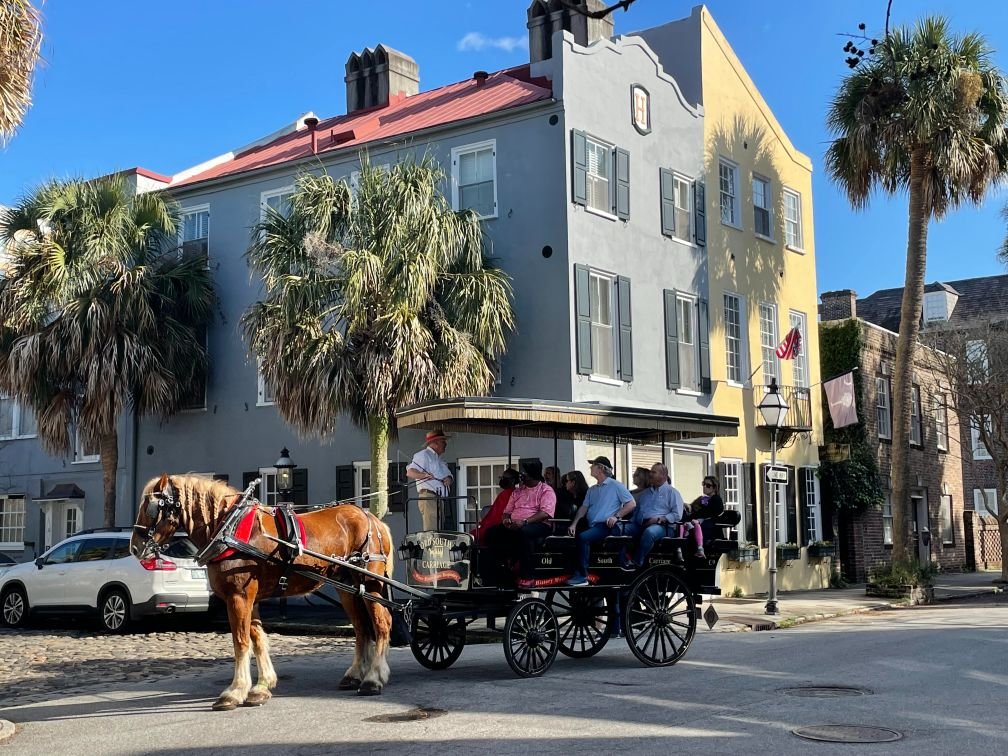
Carriage rides are popular
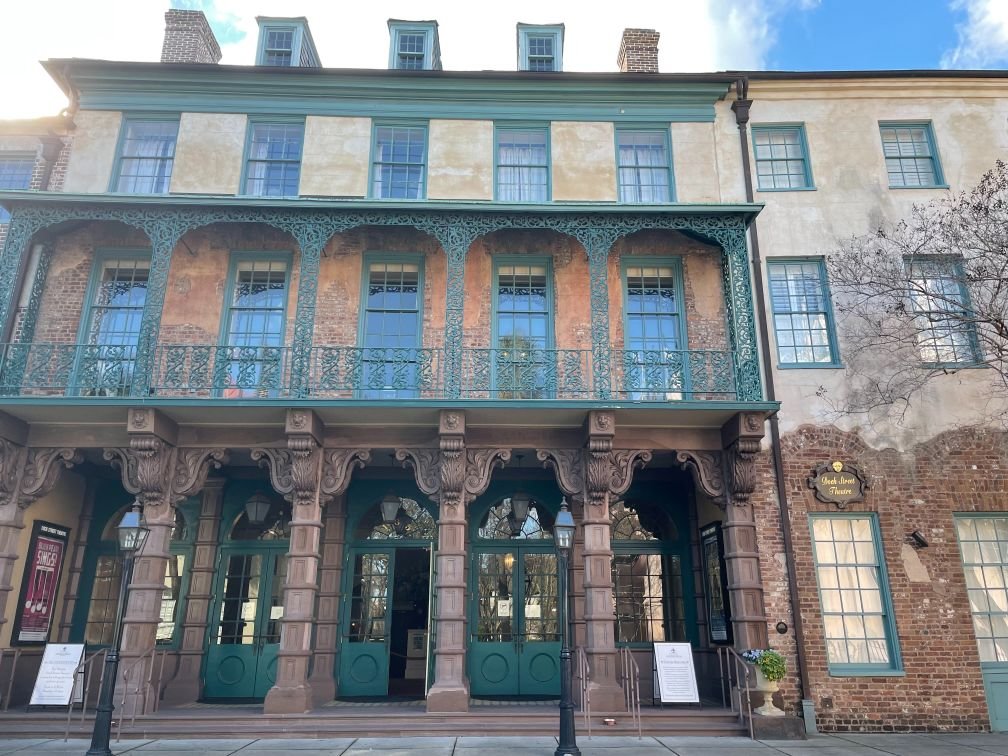
Dock Street Theatre

Fulton Lane Inn
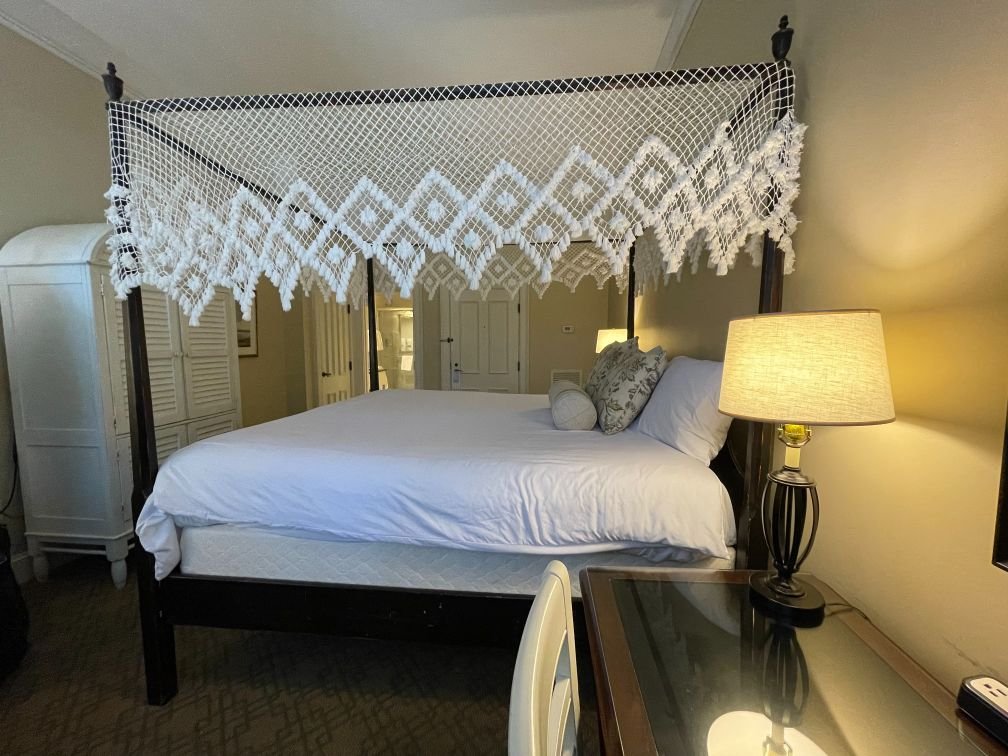
Fulton Lane Inn bedroom
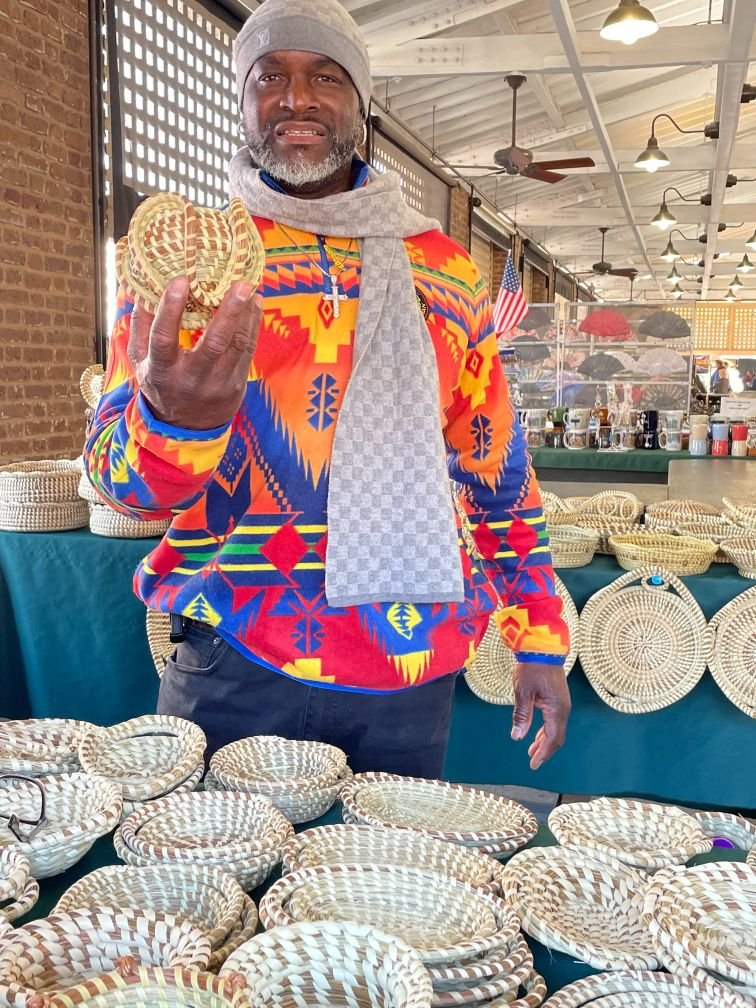
Sweetgrass baskets make wonderful cultural souvenirs
One of the most photographed streets in Charleston is Rainbow Row and you’ll typically find throngs of tourists there trying to get the perfect pic. It’s so named because the houses were painted in cotton candy hues to represent the wares sold on the ground floors of these buildings. Pink meant pork, green was for veggies, yellow indicated grains and blue, seafood.
I always make a beeline for the City Market, the oldest public market in the country. This venue is a great place to amble through, as you look at the array of products being sold by local artisans. I gravitate to the sweetgrass baskets. These handcrafted, coiled baskets are made by the Gullah people, descendants of plantation slaves in South Carolina and Georgia. You can watch the Gullah women and men weave them and ask them questions about their craft, which is handed down from generation to generation. Having bought one of these baskets on my initial visit as a cultural souvenir, I knew I wanted another, and this time I chose the elephant ears style.
Food is another major draw in Charleston. You can’t go wrong no matter where you eat, as there’s great food everywhere among the more than 150 restaurants in town. If you like seafood, you’ll be in pescatarian heaven, with everything from shrimp and crab to oysters and wreckfish. Try the She Crab soup with sherry, fried green tomatoes, shrimp and grits, okra fries and seafood gumbo for some southern specialties. And of course, sample the pralines and Charleston Benne wafers for your sweet treats. But, beware the iced tea! If you don’t say “unsweetened,” you’re going to get a nice, cold glass of very, and I mean very, sweet tea!

Magnolia Plantation home
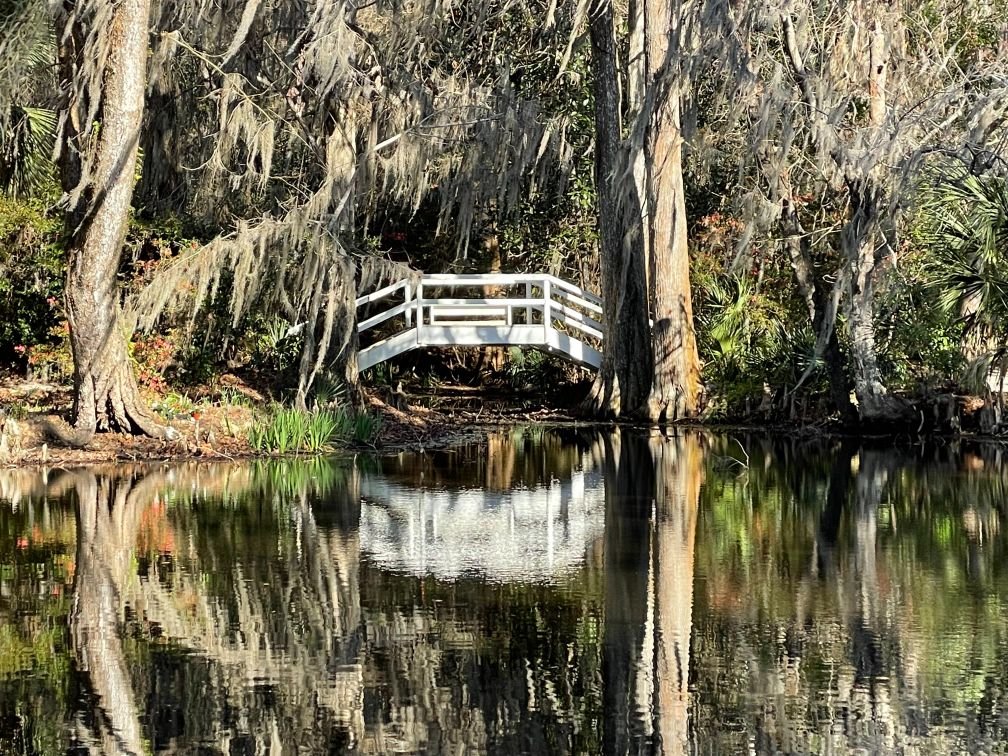
Magnolia Plantation gardens
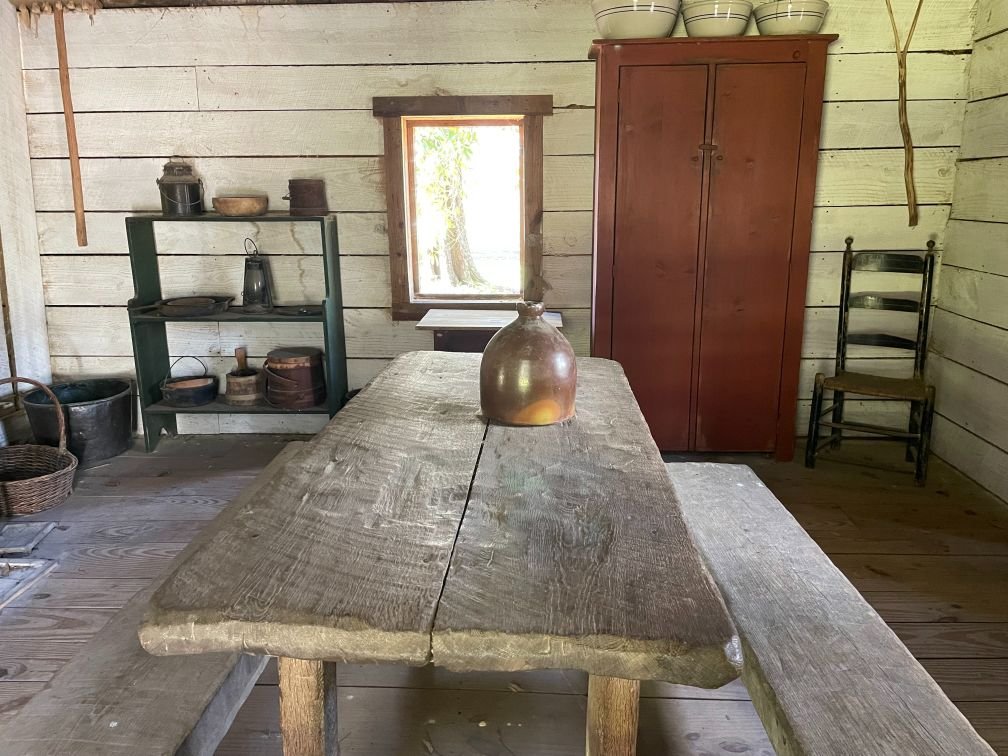
Inside a slave cabin at Magnolia Plantation
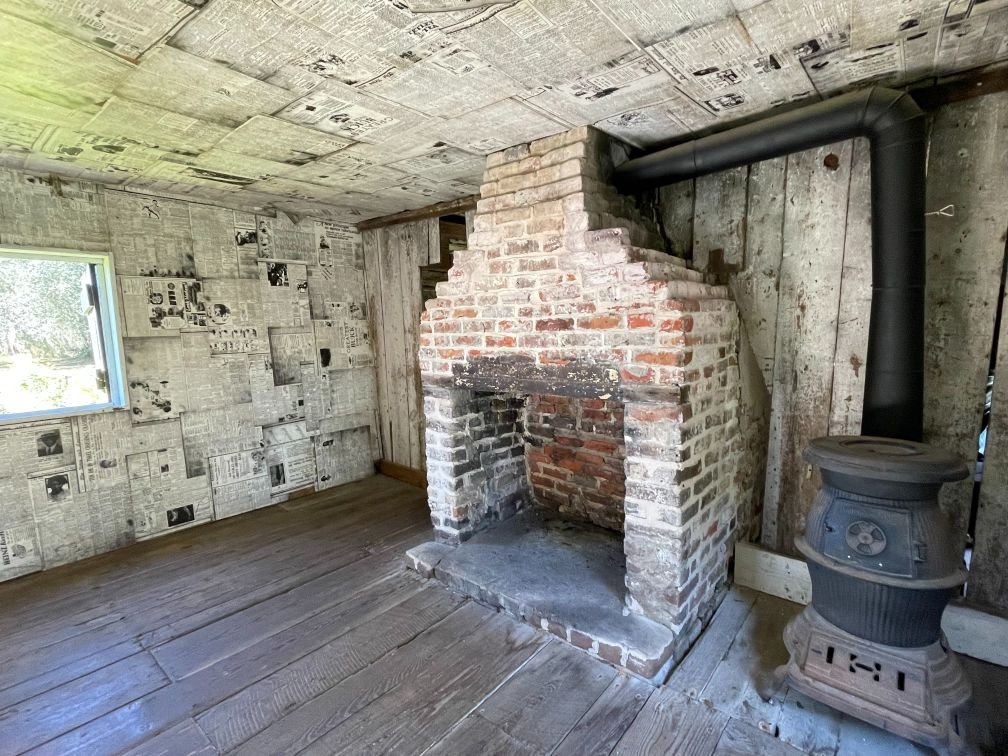
Inside a slave cabin at Magnolia Plantation
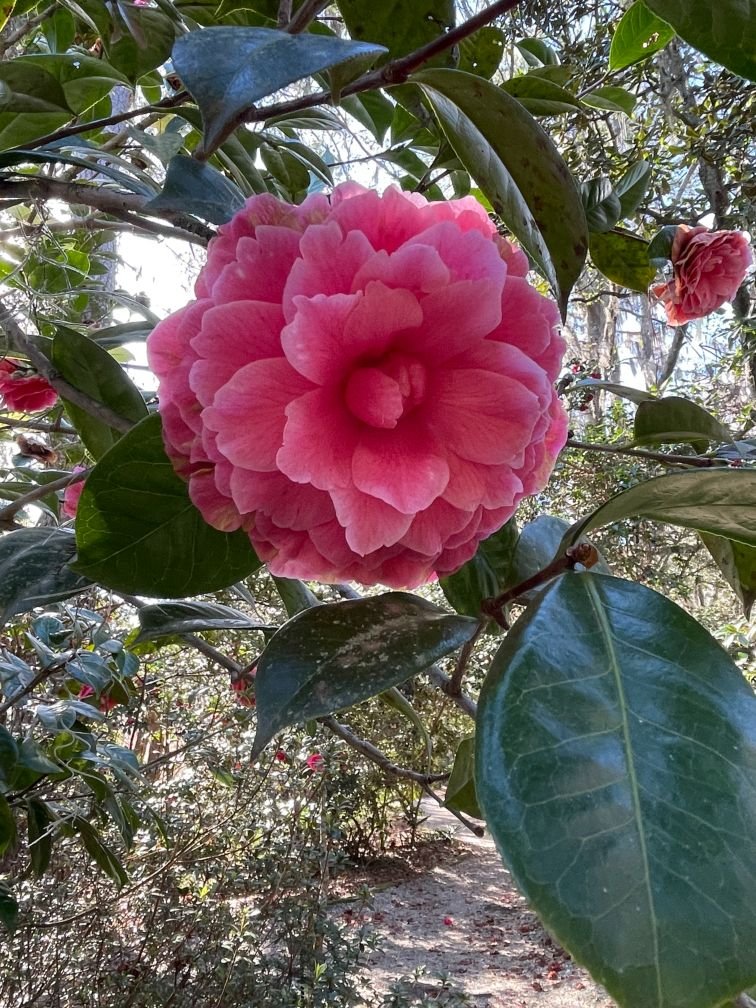
Beautiful bloom at Magnolia Plantation gardens
If you can draw yourself away from the city for one day, I recommend visiting one of the area’s plantations, such as Drayton Hall, Middleton Place or Magnolia Plantation and Gardens, for a glimpse of colonial era Lowcountry life.
I had toured Middleton Place before and this time, I chose to explore Magnolia. This plantation was founded in 1676 by the Drayton family and is the oldest public tourist site in the Lowcountry and the oldest public gardens in the country. It first opened its doors to visitors back in 1870, who came to get out of the city and view the thousands of flowers and plants on display within this tranquil setting. The garden is the only garden in South Carolina honored with the distinction of being selected as one of “America’s Most Beautiful Gardens” by Travel + Leisure Magazine.
You can take several tours while at the plantation, including one of the Drayton family homes. Rooms are furnished with early-American antiques, quilts, porcelain and other household objects that the guides use to bring to life aspects of plantation life.
There’s also a guided garden walk that showcases the different varieties of flowers, from camellias and daffodils, to azaleas and countless other blooming beauties.

Palmetto Carriage tour
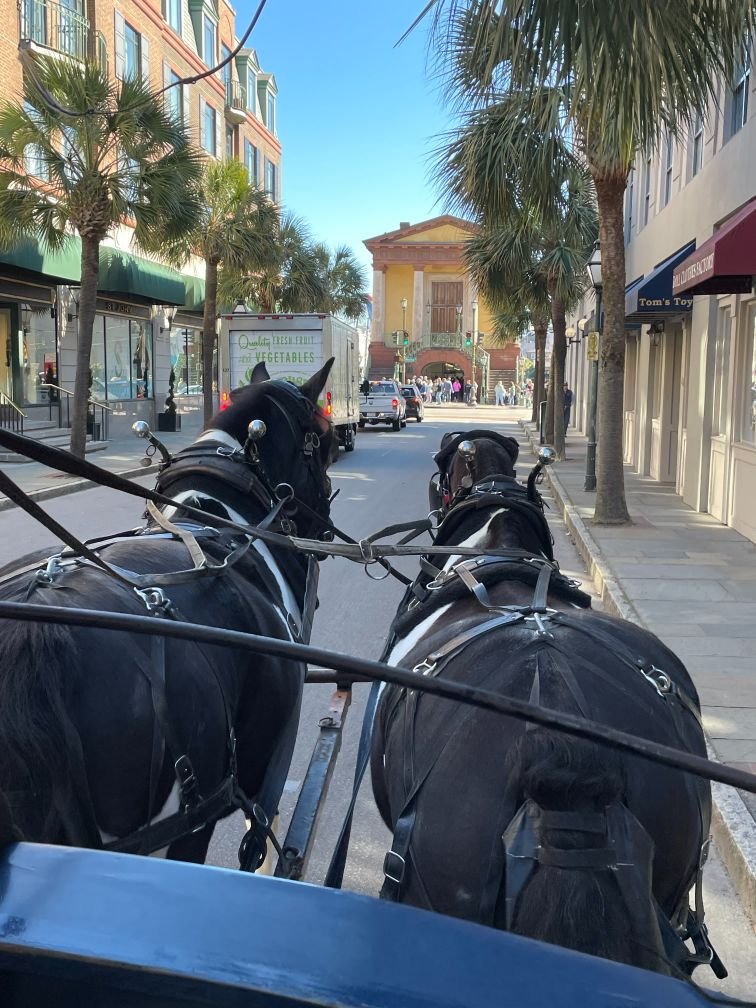
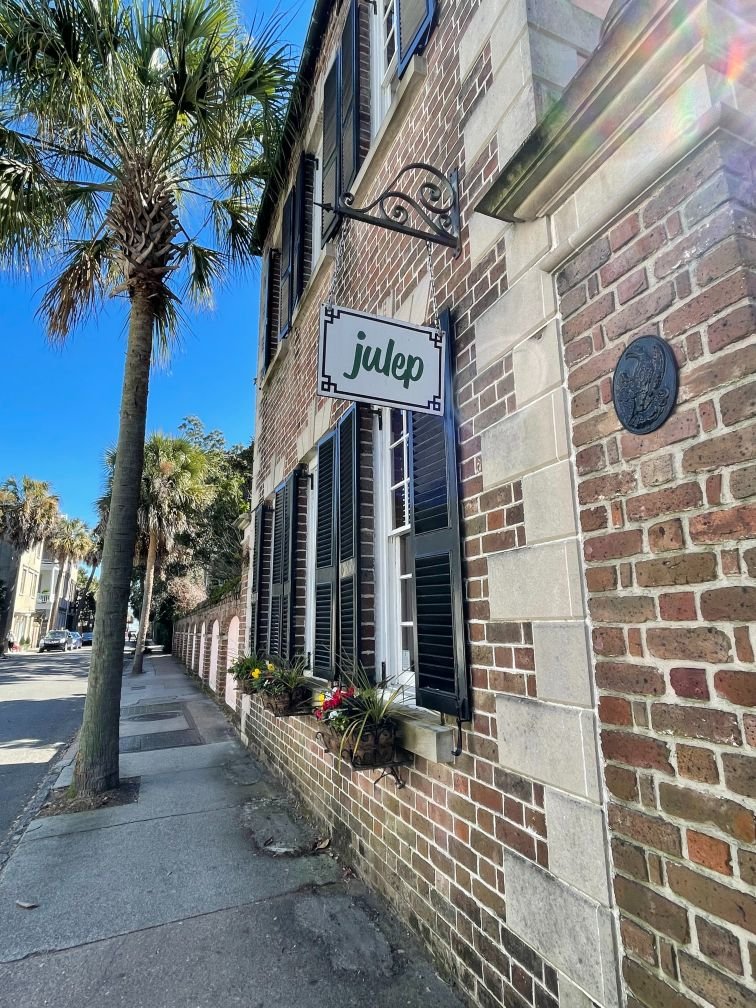
The nature tram tour takes you on a tour of the plantation’s wetlands, lakes, forests and marshes. There’s a good chance you might spot some of the inhabitants of the area, such as alligators, turtles, egrets and herons. Combine this activity with the nature boat tour for a look at the canals along the Ashley River, where you’ll most likely see a parade of wildlife in and around the waterways.
The experience that I found of most interest, however, was “From Slavery to Freedom: The Magnolia Cabin Project Tour.” This project preserves five historic structures; four cabins built in the 1850s and a smokehouse built around 1900.
During the tour, visitors hear about the men, women and children, who planted and worked in the gardens, constructed bridges, toiled in the rice fields and labored in the house, while enslaved. You’ll learn that post-Civil War, the cabins on the property were inhabited by free men and women, who worked as paid staff designing and maintaining the gardens, and serving as Magnolia’s first tour guides. Some of their descendants are still employed at the plantation today.
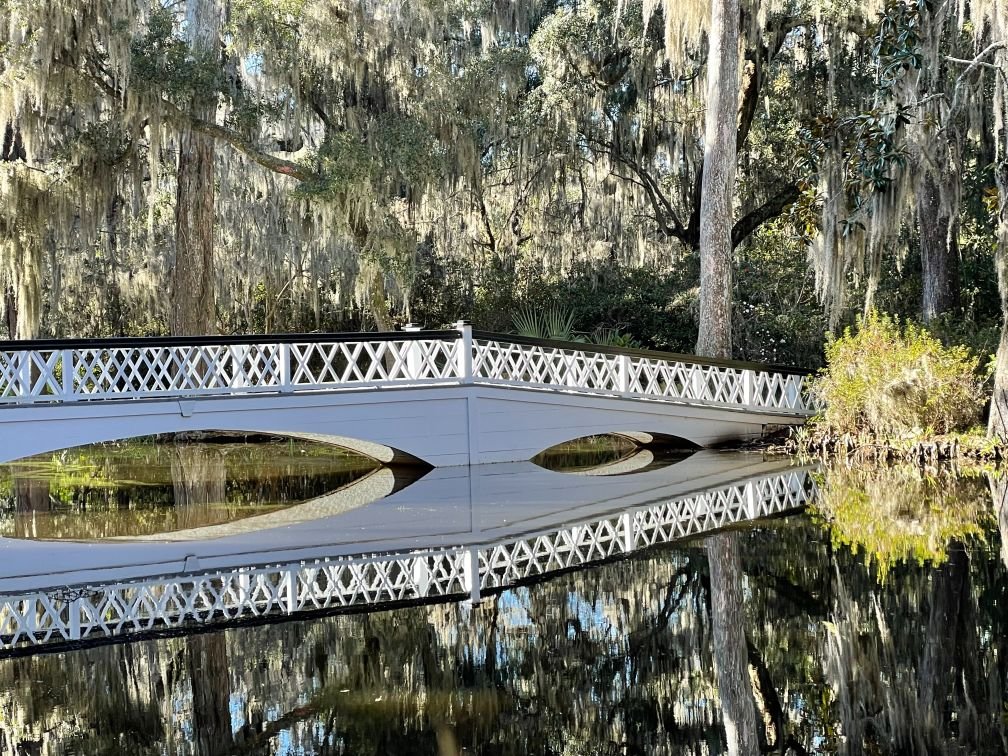
Reflective bridge at Magnolia Plantation gardens
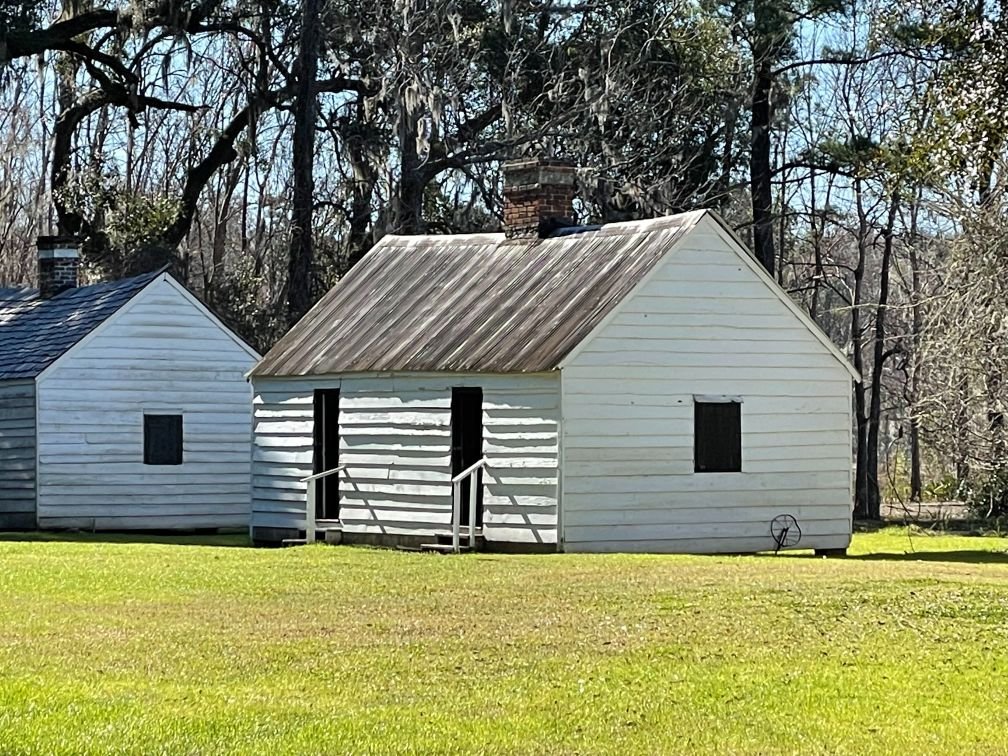
Slave cabins at Magnolia Plantation
You’ll have the chance to go inside the cabins after the presentation. Four of them have been restored, each representing a period of time significant to African-American history and that of the plantation. I appreciated that Magnolia addresses the vital role of enslaved people in Lowcountry history, giving visitors a perspective that often goes overlooked when touring plantations in the South.
When it comes to accommodations, Charleston is known for its historic inns and boutique hotels. I opted to stay at Fulton Lane Inn during my visit, as I am a sucker for historic properties. The place is one of four Charming Inns (Wentworth Mansion, John Rutledge House Inn, Kings courtyard Inn and Fulton Lane Inn), a collection of family-owned and operated accommodations with a reputation for elegance and Southern hospitality.
Fulton Lane is conveniently located, just steps from renowned King Street, close to shops, restaurants and many attractions. It boasts well-appointed guest rooms and suites with romantic touches, canopied beds, whirlpool tubs and a host of thoughtful amenities. In the morning, you’ll get served continental style breakfast in bed and in the late afternoon, you are invited to head next door to the Kings Courtyard Inn for happy hour.
Though situated in the heart of town, Fulton Lane is a quiet, hidden gem, where you’ll feel secluded from the hubbub – which makes it ideal for catching some much needed Zs after a full day of sightseeing.
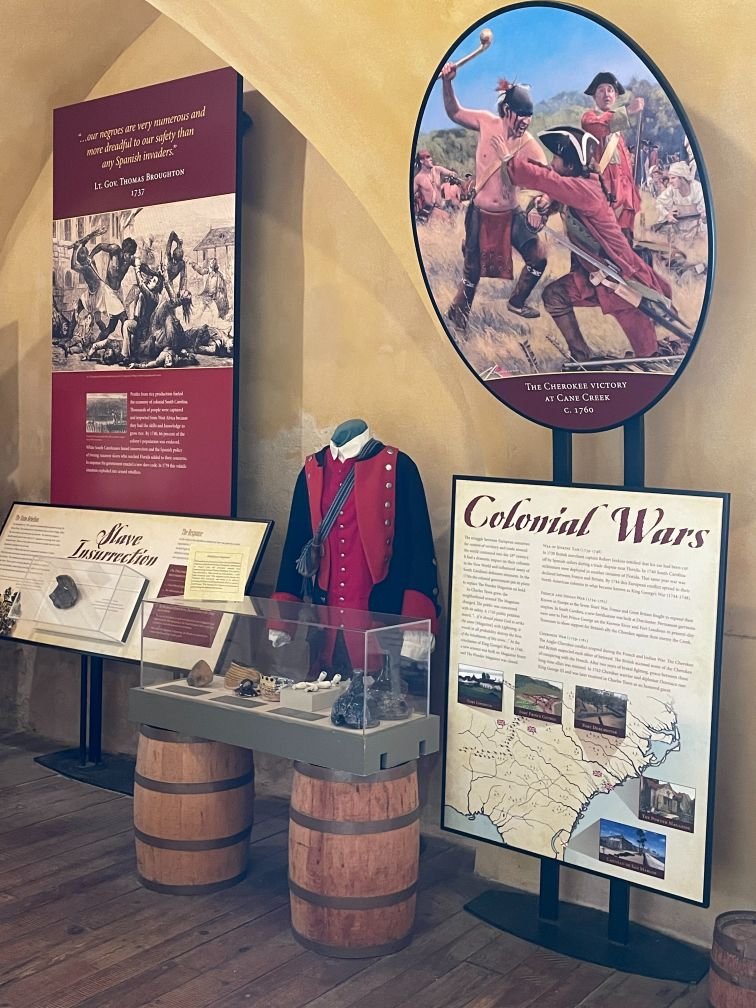
The Powder Magazine
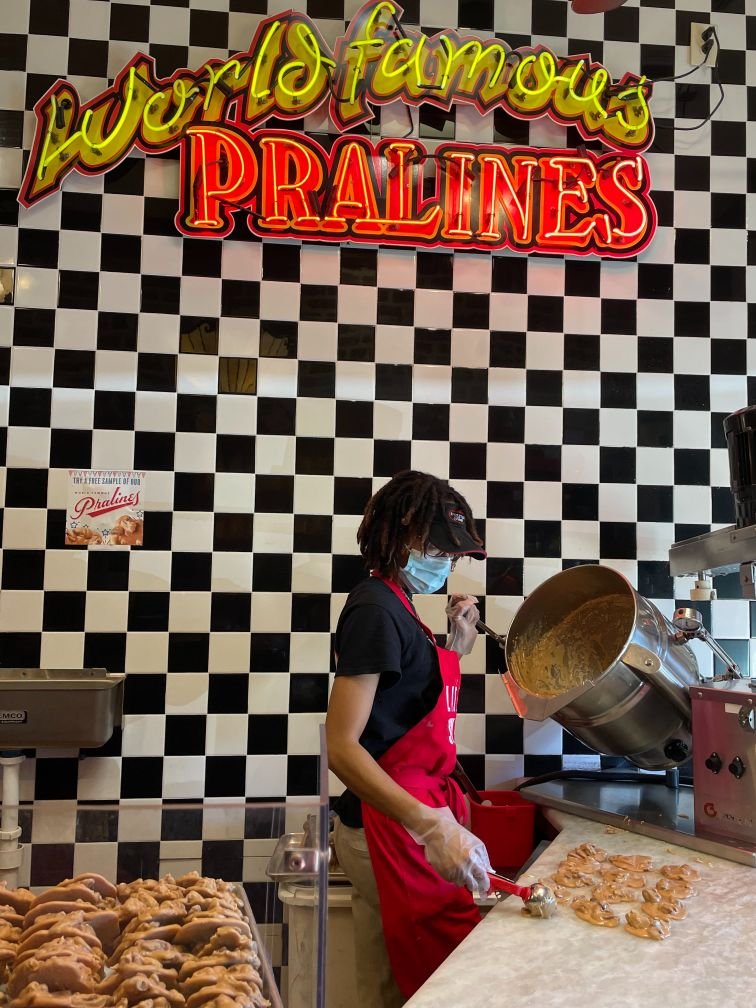
You’ll need to try a praline!
Charming Inns is also well-known for Circa 1866, a AAA Four Diamond, Forbes Four Star Award-winning Restaurant and one of Charleston’s top establishments. Tucked inside the Wentworth Mansion’s original carriage house, Circa features contemporary South Carolina cuisine in an old-world ambiance. The menu is divided into four areas: Tastes of Native Tribes, Flavors brought from Africa, Influences from Europe and South Carolina Today. You can choose all your courses from one section or mix it up, as I did.
My meal began with an amuse bouche of smoked salmon, followed by a bowl of butternut squash and peanut soup – a velvety concoction with the added sweetness of dried mango bits. I almost licked the bowl clean! For my entrée, I chose the rainbow trout with sunflower sumac crust, wild rice porridge and corn sauce, which was an incredible meld of tastes and textures. I ended the meal with one of Circa’s signature desserts, the apple soufflé, accompanied by hot toffee. Truly a memorable dining experience.
If you go:
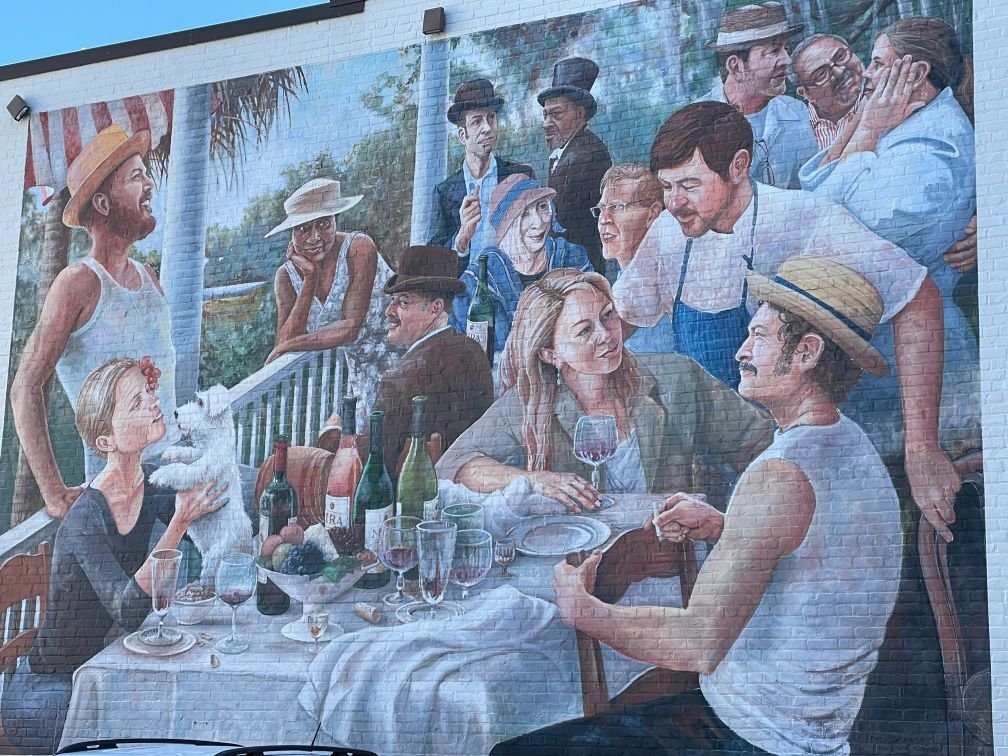
This mural says it all – eat, drink and be merry!






